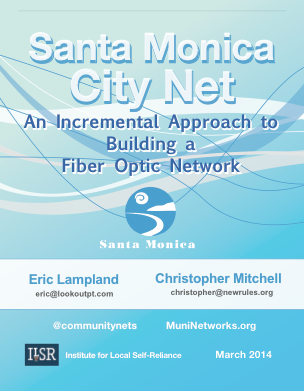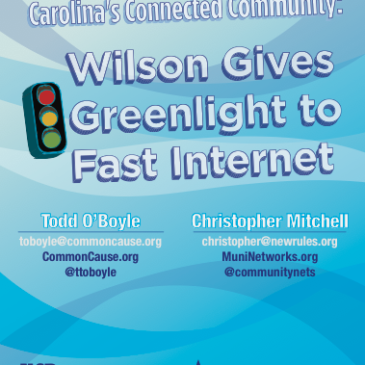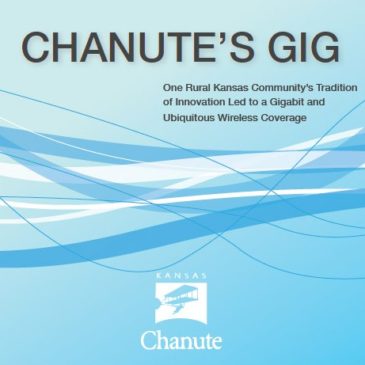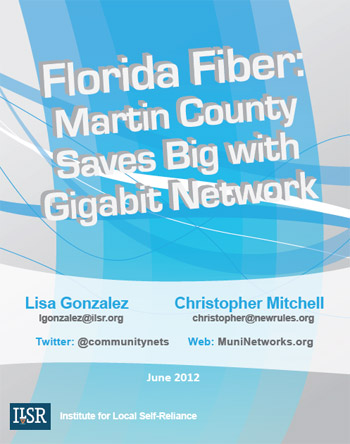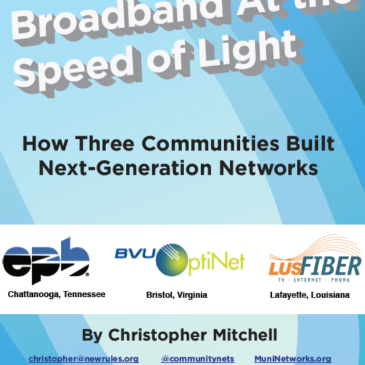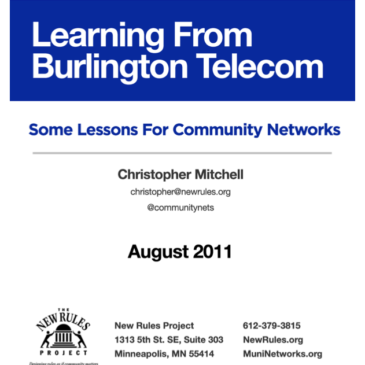Broadband Resources – Search Results
Page 3 of 4
Santa Monica City Net: An Incremental Approach to Building a Fiber Optic Network
Santa Monica has built a fiber network called City Net that has lowered its own costs for telecommunications, helped to retain businesses, and attracted new businesses to the community. Built incrementally without debt, it offers a roadmap any community can draw lessons from. Unlike the majority of municipal fiber networks, Santa Monica does not have a … Read More
The Empire Lobbies Back: How Big Cable Killed Competition in North Carolina
After a city in North Carolina built a Fiber-to-the-Home network competing with Time Warner Cable, the cable giant successfully lobbied to take that decision away from other cities. The city of Wilson’s decision and resulting network was recently examined in a case study by Todd O’Boyle and Christopher Mitchell titled Carolina’s Connected Community: Wilson Gives Greenlight … Read More
Report: Community Network Leads North Carolina to Fast Internet Future
Following the collapse of key industries, a town of 50,000 in eastern North Carolina had to make a hard choice. It wanted to support existing businesses and attract new ones but the cable and telephone companies were not interested in upgrading their networks for cutting edge capacity. So Wilson decided to build its own fiber optic … Read More
In Kansas, Rural Chanute Built Its Own Gigabit Fiber and Wireless Network
Chanute first built a vision, then a network. The fiber network connects schools and other community anchor institutions with gigabit networks. The wireless network serves public safety. Soon, both may serve everyone. The “Hub of southeast Kansas” is a small town where schools have gigabit connections, the City operates a 10Gbps fiber-optic broadband ring, and several … Read More
Florida Fiber: How Martin County Saves Big with Gigabit Network
Martin County, Florida, is saving millions of dollars because it built a county-owned fiber optic network rather than continuing to lease connections from Comcast. ILSR’s latest report, Florida Fiber: Martin County Saves Big with Gigabit Network, reveals how Martin County transformed the threat of a near ten-fold cost increase for its telecom budget into cost savings … Read More
Broadband at the Speed of Light
The fastest networks in the nation are built by local governments, a new report by the Institute for Local Self-Reliance and Benton Foundation reveals Chattanooga, Tennessee, is well known for being the first community with citywide access to a “gig,” or the fastest residential connections to the Internet available nationally. Less known are Bristol, Virginia, and … Read More
Learning from Burlington Telecom: Some Lessons for Community Networks
Publicly Owned Broadband Networks: Averting the Looming Broadband Monopoly
Quietly, virtually unreported on, a new player has emerged in the United States telecommunications sector: publicly owned networks. Today over 54 cities, big and small, own citywide fiber networks while another 79 own citywide cable networks. Over 3 million people have access to telecommunications networks whose objective is to maximize value to the community in which they are located rather than to distant stockholders and corporate executives.
For several years ILSR has been tracking telecommunications developments at the local and state level. We have worked with businesses and communities protecting their right to self-determination via the fundamental infrastructure for the information-based economy. This report offers some of our findings.
Faster, Cheaper Broadband in North Carolina Comes From Community Fiber Networks
North Carolina aims to be a hotbed for innovation and technology, but the General Assembly has recently considered bills that would preempt local authority to build broadband infrastructure. Such preemption would cripple the most advanced broadband networks in the state. This new analysis shows that community owned networks are faster and cheaper than incumbent cable and telephone networks in North Carolina.
Past broadband discussions in the General Assembly focused on a bill to prevent communities from building their own networks — but communities are the only ones building citywide next-generation fiber-to-the-home networks in North Carolina. The best connections in the state are in the towns of Salisbury and Wilson because both built community fiber networks that offer much faster connections to residents and businesses at more affordable prices.
Twin Cities Broadband No Match for Community Networks
If you live in the Twin Cities, your internet connection is slower and more expensive than small town Monticello due to a reliance on big national phone and cable companies. Over the past several years, communities in the Twin Cities have considered building a community owned broadband network to increase competition, lower prices, and ensure everyone has access to the connections required for success in the digital economy. The failure to do so is costing consumers millions and communities untold amounts in lost business opportunity.… Read More
Breaking the Broadband Monopoly
ILSR has released the most comprehensive and up-to-date report about publicly owned broadband networks: Breaking the Broadband Monopoly: How Communities Are Building the Networks They Need.
Across the country, hundreds of local governments, public power utilities, non-profits, and cooperatives have built successful and sometimes pioneering telecommunication networks that put community needs first. This report details their successes, lessons learned, and barriers to copying the model.… Read More
Burlington Telecom Fact Sheet
This Fact sheet was originally published in 2008 but was updated in April 2010.
BT is a city department of Burlington, Vermont, which owns a fiber-to-the-home network and offers triple play services(phone, cable, internet). BT’s services have produced millions in savings for the city and the community at large.
ILSR issued a report in 2011 that updates this fact sheet: Learning from Burlington Telecom: Some Lessons for Community Networks
Municipal Broadband: Demystifying Wireless and Fiber-Optic Options
The United States, creator of the Internet, increasingly lags in access to it. In the absence of a national broadband strategy, many communities have invested in broadband infrastructure, especially wireless broadband, to offer broadband choices to their residents.
Newspaperheadlines trumpeting the death of municipal wireless networks ignore the increasing investments by cities in Wi-Fi systems. At the same time, the wireless focus by others diverts resources and action away from building the necessary long term foundation for high speed information: fiber optic networks.
Burlington Telecom Case Study
In the modern world, broadband information networks are essential infrastructure, a combination of the past’s canals, telegraph wires, interstate highways, and airports. Unfortunately, other developed countries offer faster networks at cheaper prices to their businesses and citizens. Few disagree that the United States must solve this broadband problem.
This case study shows how one city did it. No private company was willing to build the high-speed information network Burlington, Vermont, needed on the timeline it wanted. Rather than hope and wait, they’re building it themselves. After their original plan collapsed, they persevered and developed a different model, using a tax-exempt municipal capital lease arrangement with an outside investor. The City will have direct ownership within 15 years; they already have complete control.
ILSR issued a report in 2011 that updates this case study: Learning from Burlington Telecom: Some Lessons for Community Networks
Localizing the U.S. Broadband Problem
A growing number of opinion leaders are rallying behind the argument that only federal leadership can stop the United States’ slide into broadband oblivion. In a widely circulated document, attorneys Jim Baller and Casey Lide set out their plan for developing a National Broadband Strategy, the crux of which is a blue ribbon task force that would establish national goals, and develop recommendations on how to get there. So far, the most substantial Congressional movement is West Virginia Senator John D. Rockefeller’s resolution advocating legislation toward this end.
It’s impossible to be against setting up a blue ribbon task force. Certainly, we need a national discussion about how to best use public assets, in particular the airwaves and rights of way, to rapidly expand broadband access. But we object to the way the discussion is being framed.



